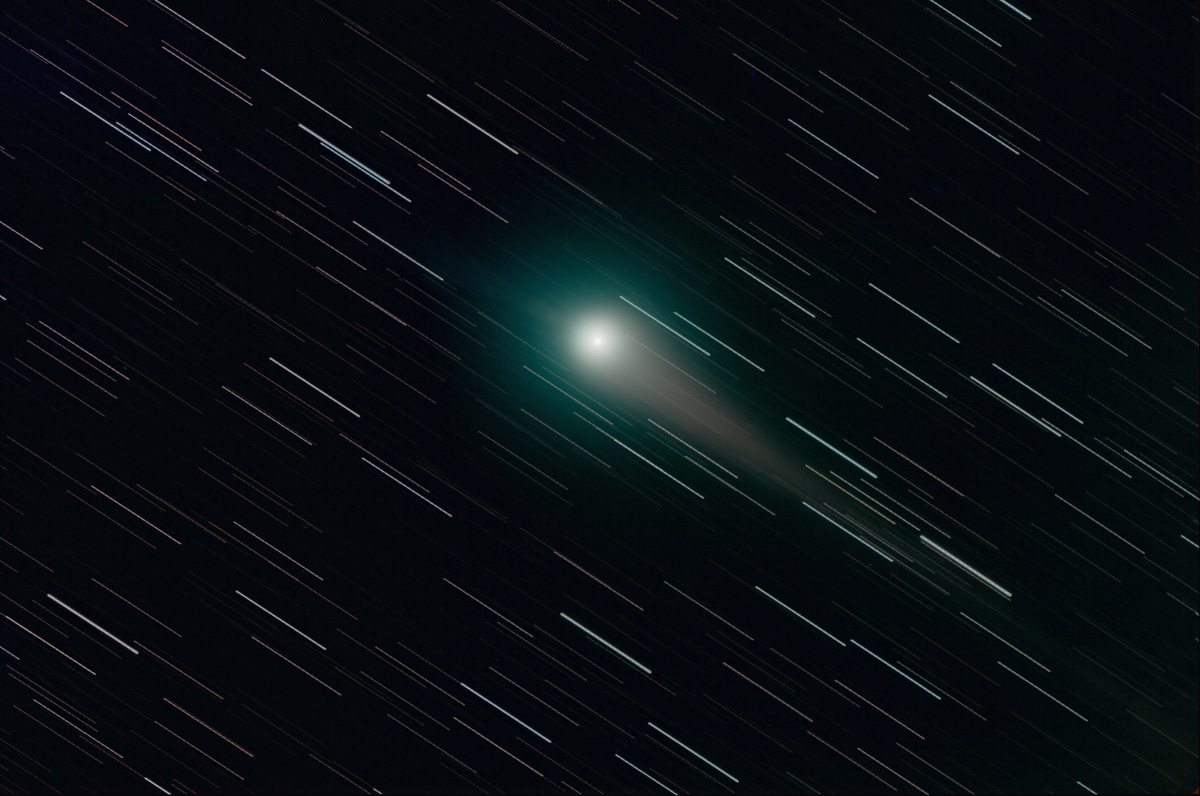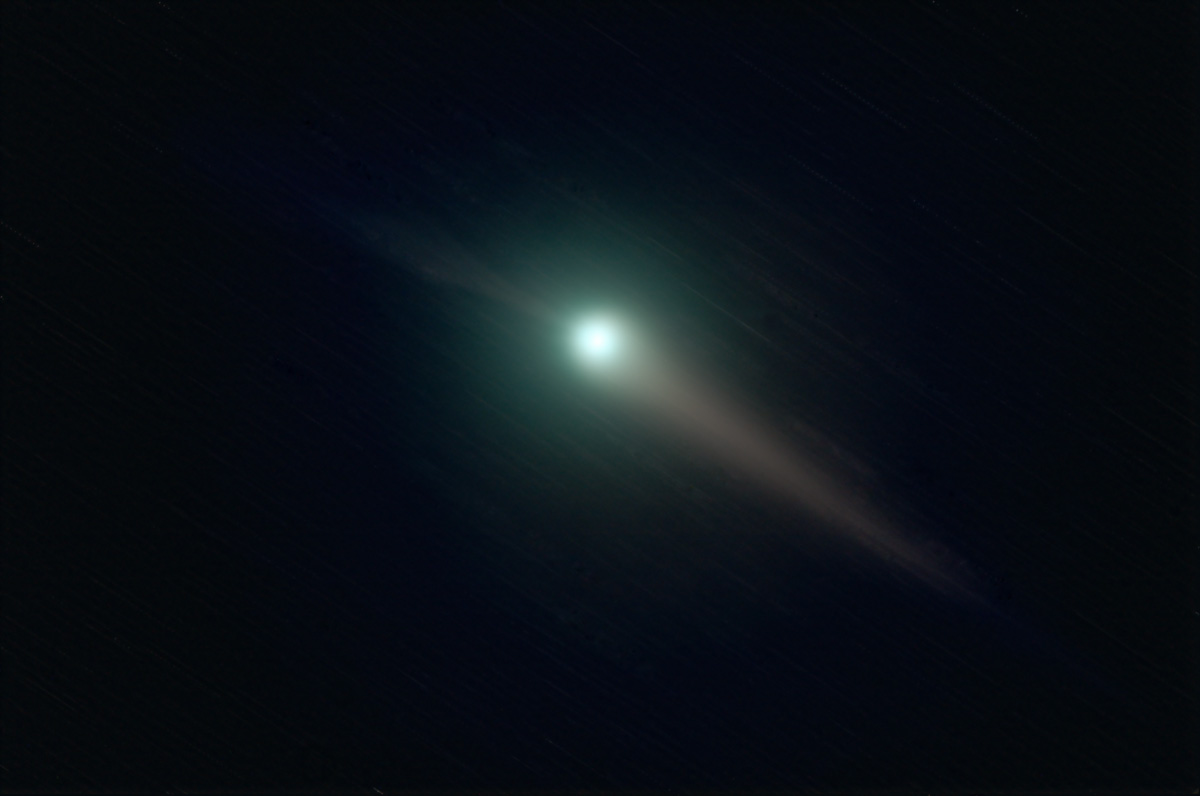 |
Comet C/2007 N3 (Lulin)
 |
 |
Copyright 2009 Hap Griffin
Comet C/2007 N3, otherwise known as Comet Lulin, named after the observatory in China from where it was discovered in July 2007. In this photograph, the comet's greenish gas tail points to the upper left and is being blown directly away from the sun. A reddish dust anti-tail is much brighter and points towards the sun at the lower right. It is not uncommon to see both a tail and an anti-tail on comets that orbit the sun in nearly the ecliptic plane (the plane in which the planets orbit the sun) as Comet Lulin does. However, an anti-tail so much more prominent than the more well known gas tail is somewhat unusual. Also unusual is the fact that the comet, although orbiting nearly in the plane of the planets, is orbiting backwards to the directions of the planets. Studies of its orbit indicate that it will not return to the inner solar system for over 1000 years.
The top image is a stack of twenty three-minute exposures guided on the comet's nucleus, so its motion against the background stars over the time frame of the exposures is obvious. The second image is processed to remove the stars so that the comet's detail can be better seen. At the time of this photograph, Comet Lulin was in the constellation of Virgo and at a distance of about 50 million miles.
Date/Location:
February 20, 2009 Griffin/Hunter
Observatory Bethune, SC
Instrument: Takahashi FSQ-106N Refractor
Focal Ratio: f/5
Camera: Modified Canon 40D
Guiding: Auto via SBIG ST-402 through 10" f/4.7 Newtonian
Mount: AP1200GTO
Conditions: Visually clear and cold - some sky glow
Weather: 28 F
Exposure: 60 minutes total (20 x 3 minutes) @ ISO 800
Filters: Baader UV/IR block internal to camera
Processing: Focused and captured with ImagesPlus Camera
Control v 3.75.
RAW to TIFF conversion, dark and flat frame calibration, Digital Development in
ImagesPlus v3.50a. FInal tweaking in Photoshop CS3.